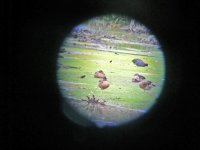John P
Usually on a different wavelength
Saw this advertised recently and wondered if it would have any useful applications as a camera for digiscoping.
It looks to have a reasonable spec, roughly on a par with the Canon A95
>I.S. Digital Camera<
It looks to have a reasonable spec, roughly on a par with the Canon A95
>I.S. Digital Camera<




